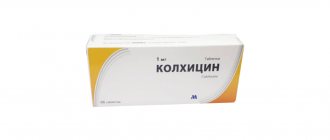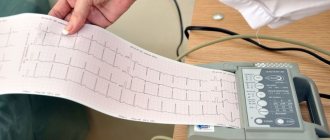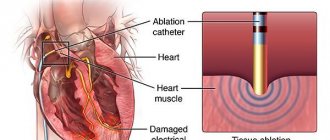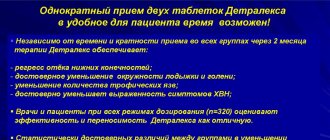Natural springs
Hesperidin is found in various citrus fruits. Most of the compound is found in the skin of the fruit, and about 10-15% is in the pericarp and seeds. The largest amount of hesperidin contains:
- unripe oranges;
- tangerines;
- hybrid fruits obtained by crossing oranges and tangerines.
Small concentrations of the substance contain extracts of valerian, Condopsis flowers, white bomeria, etc. These natural sources are not used for the industrial production of medicinal supplements. Diosmin is not found in nature and can only be obtained by processing hesperidin.
Doctor's Best, Vein Support, with DiosVein and MenaQ7, 60 Vegetarian Capsules
RUB 1,141
More details
Risks and side effects
In general, this compound is considered safe for most people when taken by mouth for up to six months. Using it for a longer period of time may be more likely to cause side effects, so it is best to avoid long-term use.
Side effects that may occur when using this supplement include abdominal pain, diarrhea, contact dermatitis, and nausea.
Hesperidin supplements may not be safe for people taking certain medications. Do not take this supplement without talking to your doctor if you are taking any of the following:
- Blood thinners or anticoagulants
- Antiplatelet drugs
- Blood pressure medications
- Calcium channel blockers
- Sedatives
It is possible that hesperidin may affect blood clotting and increase the risk of bleeding, so always use caution when taking anticoagulant or antiplatelet drugs or undergoing surgery.
Conclusion
- Hesperidin is a bioflavonoid found in citrus fruits. It is isolated from these fruits to make supplements and medicines, which are most often used to treat poor circulation, varicose veins, hemorrhoids and high blood pressure.
- The benefits of hesperidin include that it has anti-inflammatory, antioxidant, lipid-lowering and insulin-sensitizing properties. It provides protection against neurological problems and inflammatory markers associated with heart disease, diabetes and cancer.
- You should not take this supplement if you are taking certain medications, including anticoagulants, blood thinners, blood pressure medications, and calcium channel blockers.
Impact on the body
The beneficial effects and properties of natural hesperidin and the synthetic compound diosmin are greatly enhanced when these substances are used simultaneously. Therefore, individual nutrients are practically not used. Flavonoids enhance the vasoconstrictor effects of the hormone and neurotransmitter norepinephrine. As a result, the tone of the vein walls increases, venous capacity decreases and blood stagnation in the distal parts of the lower extremities decreases. Bioflavonoids reverse vascular damage observed in patients with chronic venous insufficiency.
In addition to the venotonic effect, flavonoid compounds have other effects:
- increase the intensity of contraction of lymphatic vessels and improve the outflow of lymph, due to which swelling of the legs goes away faster;
- reduce the permeability of capillaries and reduce their fragility, so the vessels of the microvasculature maintain their integrity;
- make venous walls more resistant to the harmful effects of free radicals and reactive oxygen species;
- reduce the concentration of pro-inflammatory prostaglandins and cytokines, reduce pain;
- prevent the risk of bleeding in women using an intrauterine device as a contraceptive.
Attention! Hesperidin is similar in structure to estrogens, so it prevents bone loss and the development of genital tumors in women during menopause.
Description:
Hesperidin is one of the most important flavonoids with a low molecular weight (610.57 Da). Its molecular formula is C28H34O15. Hesperidin belongs to flavanone, a class of flavonoids. Chemically, it consists of an aglycone (a form without sugar residues called hesperitin) and a sugar rutinoside: hesperetin-7-rutinoside or IUPAC name: (2S)-5-hydroxy-2-(3-hydroxy-4-methoxyphenyl) - 7-[(2S, 3R, 4S, 5S, 6R) -3,4,5-trihydroxy-6 - [[(2R, 3R, 4R, 5R, 6S) - 3,4,5-trihydroxy-6-methyloxan -2-yl] oxymethyl] oxan-2-yl] oxy-2,3-dihydrochromen-4-one.
Hesperidin is a flavan glycoside found in citrus fruits. It is a naturally occurring glucoside in most citrus fruits, found mostly in the fruit's albedo (the inner white, loose layer of citrus peel). Its aglycone form is called hesperetin. The name comes from the word Hesperidium or “hesperidium” - the fruit of plants of the orange subfamily. Hesperidin was first isolated in 1828 by the French chemist Lebreton from the white inner layer of citrus peel (mesocarp, albedo). Hesperidin is believed to play a role in plant defense.
Application:
In medicine, hesperidin is used as a venoprotective and antioxidant agent. For medicinal purposes it is often used in combination with diosmin. Included in drugs for the treatment of venous insufficiency, hemorrhoids, and lymphedema. There are studies that show the positive effects of hesperidin on rheumatoid arthritis and lowering diastolic blood pressure, as well as its ability to inhibit the spread and growth of cancer cells in cancer.
The use of hesperidin in infections is being studied. Antibacterial and antifungal activity of ethanol extract of grapefruit seeds and pulp against bacteria and yeast strains. The strongest antibacterial effect was observed against Salmonella enteritidis with a minimum inhibitory concentration (MIC) of 2.06% (extract concentration), and MICs for other bacteria and yeasts tested ranging from 4.13% to 16.5%. A recent study with Aeromonas hydrophila, a human pathogen that causes intestinal and extraintestinal infections, demonstrated that hesperidin has bactericidal and immunomodulatory effects. Other observations have shown that hesperidin is effective against human rotavirus, which causes diarrhea in infants and young children. Hesperidin also inhibited influenza virus (flu) replication in vitro and reduced the number of infected cells. Both in vitro and in vivo experiments show that hesperidin exhibits antiparasitic activity against adult Schistosoma mansoni worms, which cause the tropical disease schistosomiasis, which affects millions of people, especially children, worldwide.
Receipt:
Hesperidin will be obtained from the albedo of fruits. According to one of the methods (owned by R.H. HIGBI), the following occurs: after coagulation of the mucous components, the concentration of hydrogen ions in the mass is adjusted to a pH of approximately 11.0 to 11.5 using a suitable alkalizing agent. The suspension or slurry is agitated for a period of time to allow extraction of hesperidin from the starting material, after which the mass is subjected to a pressing operation to separate the hesperdin-containing liquid from the leached peel. The hesperedin solution is then adjusted to a pH below 9.0 using a suitable acid. At a pH below about 9.0, hesperidin crystallizes from solution. However, since crystallization may be slow at this point, centrifuge or filter the neutralized solution soon after neutralization to separate fine pulp particles, undissolved lime, and other foreign matter that tend to contaminate the hesperidin. Crystallization of hesperidin from liquid, after separation of foreign materials, is allowed to proceed to near completion at room temperature, which is usually accomplished approximately 43 hours after acidification. The resulting hesperidin is not purified because it usually contains some impurities. It is separated from the mother liquor and dissolved in a relatively weak alkali, then mixed with a quantity of alcohol to coagulate certain impurities in the form of pectic substances, which are subsequently removed by filtration. The filtrate is retained and acidified to a pH below about 9 and preferably to a pH of about 6.0, at which point ApI-I crystallizes hesperidin from solution. These crystals are then separated from the solution.
Effect on the body:
Hesperidin 6-O-alpha-L-rhamnosyl-beta-D-glucosidase enzyme, which uses hesperidin to convert and H2O to produce hesperetin and rutinose, is found as Ascomycete. Hesperdin itself is absorbed from the intestine intact, like a glycoside. Its aglycone hesperitin appears in plasma 3 hours after oral administration, reaching a peak around 5 and 7 hours. The circulating forms of hesperitin are glucuronides (87%) and sulfoglucuronides (13%). For hesperedin, urinary excretion is almost complete 24 hours after ingestion of orange or juice and is not dose-dependent. Although hesperidin does not have the usual structural elements to properly scavenge free radicals and act as a chelator, the ability to chelate metal ions has been confirmed in some studies (Faculty of Pharmacy, Department of Physical Chemistry, University of Belgrade, Belgrade, Serbia, 2014). Other scientific observations have discovered hesperidin's antioxidant activity and radical scavenging properties using various assay systems (Jovanovic et al). In addition, hesperidin was found to be effective in protecting liposomes from peroxidation caused by ultraviolet radiation. Numerous studies have confirmed the powerful biological activity of hesperidin: effects on the vascular system (reduces capillary permeability), anti-inflammatory effect, antioxidant effect, effect on enzymes, antimicrobial (antibacterial, antifungal, antiviral) and anticarcinogenic activity, inhibition of cell aggregation, antiallergic effects. The possible anti-inflammatory effect of hesperidin is likely due to the anti-inflammatory effect of its aglycone hesperetin. Hesperetin appears to influence arachidonic acid metabolism as well as histamine release. It inhibits phospholipase A2, lipoxygenase and cyclooxygenase. There is evidence that hesperetin inhibits the release of histamine from mast cells, which may explain the possible antiallergic activity. The lipid-lowering effects of hesperidin are likely related to the possible lipid-lowering effects of hesperetin. Hesperetin may reduce plasma cholesterol levels by inhibiting 3-hydroxy-3-methylglutaryl coenzyme A (HMG CoA) reductase as well as acyl coenzyme A cholesterol acytransferase (ACAT). Inhibition of these enzymes by hesperetin has been demonstrated in rats fed a high-cholesterol diet.
The mechanism of the possible vasoprotective effect of hesperidin is unclear.
Animal studies have shown that it reduces microvascular permeability. Hesperidin alone or through hesperetin may protect endothelial cells from hypoxia by stimulating certain mitochondrial enzymes such as succinate dehydrogenase. The mechanism of the possible anticarcinogenic effect of hesperidin is also unclear. One explanation may be inhibition of polyamine synthesis. Inhibition of lipoxygenase and cyclooxygenase is another possibility.
Application in medicine
Doctors use drugs containing the flavonoids hesperidin and diosmin for various lesions of the venous vessels. There are venotonics for topical use - in the form of gels and ointments. Next we will talk mainly about products for oral use. They are available in 3 forms: hard tablets, gelatin-coated capsules and suspension.
For varicose veins
Drugs are prescribed to eliminate unpleasant symptoms of varicose veins, such as:
- feeling of heaviness and fatigue in the legs;
- pain in the calf muscles;
- swelling of the feet and legs in the evening;
- the appearance of spider veins;
- swelling of veins.
With regular use of drugs containing hesperidin and diosmin, the venous wall is strengthened and the progression of varicose veins is slowed down. Patients get rid of painful symptoms and can return to normal life.
Watch a video about what supplements can be used for varicose veins and lymphostasis:
Dietary supplements for varicose veins and lymphostasis
For hemorrhoids
The main effect of flavonoids is to increase the tone of hemorrhoids. After taking the drugs, the blood supply to the veins in the anus decreases, and problems with defecation disappear. With prolonged use of the active substance hesperidin, the walls of the veins become strong, and bleeding occurs much less frequently. The drugs also stop the inflammatory process and have a pronounced analgesic effect.
For the treatment of trophic ulcers
Flavonoid compounds have pronounced regenerative properties. They reduce the area of distribution and depth of trophic ulcers. Hesperidin also improves blood flow in the affected area, making wound healing much faster and eliminating acute pain.
Before and after vein surgery
Bioflavonoid complexes are used during the period of preparation for vein operations or the elimination of hemorrhoids. The products accelerate tissue healing and prevent relapses of the disease.
Hesperidin is also used in the postoperative period. The drugs increase peripheral vascular resistance, prevent orthostatic hypotension, reduce swelling of the legs, and are used after prolonged bed rest and to prevent venous insufficiency. The ability of flavonoids to prevent bleeding in patients after phlebectomy has been proven.
Supplements and dosage
In most studies, participants were typically given a dosage of 150 to 300 milligrams once or twice a day. Other studies have used higher doses, greater than 600 mg per day, over a period of 4 to 12 weeks.
The following dosage is recommended based on research:
- For hemorrhoids - inside the anus, 150 mg of hesperidin plus 1350 mg of diosmin twice a day for 4 days, then 100 mg of hesperidin and 900 mg of diosmin twice a day for 3 days.
- For leg ulcers caused by poor circulation - a combination of 100 mg hesperidin and 900 mg diosmin daily for up to 2 months.
Hesperidin can also be combined with other antioxidants, herbs, or compounds depending on the condition it is being used to treat.
Diosmin is often taken in combination with hesperidin. When should you take diosmin with hesperidin? Most often, you will be directed to take this combination several times a day in divided doses. Read the instructions for the specific product you are using as dosage recommendations vary from product to product.






